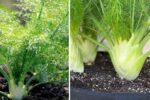Growing baby butterhead lettuce at home is a rewarding and enjoyable gardening project that anyone can do, even without much space or experience. This soft, buttery lettuce variety is prized for its tender texture and mild, slightly sweet flavor. It’s perfect for fresh salads, sandwiches, and wraps, and because it grows quickly, you can harvest it several times during the season. Whether you’re planting in the ground, raised beds, or containers, baby butterhead lettuce is easy to cultivate with just a little care and attention. Here’s a detailed step-by-step guide to help you grow it successfully from seed to harvest.
Understanding Baby Butterhead Lettuce

Baby butterhead lettuce, also called Bibb or Boston lettuce, is a soft-leaf variety known for forming small, loose heads with delicate, buttery leaves. Unlike crisphead or romaine lettuce, butterhead has a smooth, tender texture and a sweeter taste. The “baby” version refers to harvesting the plant early, when the heads are smaller and the leaves are especially tender and flavorful.
This variety thrives in cool weather, typically in spring or fall, and grows quickly, usually maturing within 45 to 60 days. It’s an excellent choice for:
- Small gardens or urban balconies
- Container or hydroponic systems
- Gardeners seeking quick harvests
- Continuous salad production throughout the season
Choosing the Right Location
Butterhead lettuce thrives best in full sunlight but can also grow well in partial shade, especially in warmer climates. Choose a location that receives at least four to six hours of sunlight daily. Too much direct heat can cause the plant to bolt or turn bitter, so if you live in a hot region, pick a spot that gets some afternoon shade. Ensure the area has good air circulation to prevent fungal diseases.
Preparing the Soil
The soil is the foundation of successful lettuce growth. Baby butterhead lettuce prefers well-draining, loose, and fertile soil with a pH between 6.0 and 7.0. Before planting, loosen the top six inches of soil and mix in compost or well-rotted manure to enrich it with nutrients. Avoid heavy clay soils, as they retain too much moisture and can cause root rot. If you are planting in containers, use a high-quality potting mix that allows proper drainage.
Planting the Seeds

You can grow baby butterhead lettuce either from direct seeding outdoors or by starting seeds indoors for later transplanting.
Direct Sowing (Outdoors):
- Wait until after the last frost when the soil is workable.
- Sow seeds about ¼ inch deep in rows spaced 10–12 inches apart.
- Cover lightly with fine soil or compost and mist gently with water.
- Once seedlings sprout, thin them to 6–8 inches apart to allow enough space for heads to form.
Starting Indoors:
- Start seeds 3–4 weeks before the last frost date in seed trays or small pots.
- Keep the soil moist and place the trays in bright light or under grow lights.
- When seedlings have at least two true leaves, harden them off by placing them outdoors for a few hours each day before transplanting.
- Transplant to the garden when temperatures stay above 45°F (7°C).
Watering and Moisture Control
Butterhead lettuce contains a lot of water, so consistent moisture is key to producing tender, non-bitter leaves. However, too much water can cause root problems, so balance is essential.
Tips for watering effectively:
- Keep the soil consistently moist but never waterlogged.
- Water in the morning to allow the plants to dry by evening.
- Use drip irrigation or a soaker hose to water the soil directly rather than the leaves.
- Apply mulch such as straw or shredded leaves around the plants to retain moisture and keep the soil cool.
- In hot weather, check soil moisture daily and water more frequently if needed.
Avoid letting the soil dry out completely between waterings, as this can make the leaves tough and bitter.
Feeding and Fertilizing

Butterhead lettuce is a light feeder but still benefits from a balanced nutrient supply. If you enriched the soil with compost before planting, that may be sufficient for the entire growing season. However, if you notice slow growth or pale leaves, you can apply a diluted liquid fertilizer every two to three weeks. Avoid excessive nitrogen, as it can produce overly soft leaves that are more prone to pests and diseases.
Protecting from Pests and Diseases
Lettuce plants are often targeted by aphids, slugs, and snails. To prevent infestations, inspect the plants regularly and remove any pests you find. You can use neem oil or an organic insecticidal soap as a safe treatment. Placing crushed eggshells or diatomaceous earth around the base of the plants can deter slugs and snails. Ensure proper spacing between plants to improve airflow and reduce humidity, which helps prevent fungal diseases like downy mildew or leaf spot.
Caring for Growing Plants

Once your lettuce starts to grow, a little regular care will keep it thriving.
- Thin seedlings early to prevent overcrowding.
- Keep the garden weed-free so weeds don’t steal nutrients and water.
- Remove yellowing or damaged leaves to encourage new growth.
- In warm weather, cover the plants with shade cloth or netting to keep them cool and prevent bolting.
- Monitor for pests daily, especially during humid weather.
Regular care ensures healthy, compact heads with sweet, tender leaves.
Harvesting Baby Butterhead Lettuce

One of the best things about growing baby butterhead lettuce is that you can harvest it in stages. For baby leaves, start picking the outer leaves when they reach three to four inches long, allowing the inner leaves to keep growing. If you prefer full heads, wait until the lettuce forms a firm, compact shape but harvest before it starts to bolt. Cut the head off just above the soil line using a sharp knife or scissors. The remaining roots may produce a second, smaller harvest if watered and cared for properly.
Post-Harvest Care and Storage
After harvesting, rinse the leaves gently with cool water to remove any dirt or insects. Shake off excess water and dry them using a paper towel or salad spinner. Store the lettuce in a perforated plastic bag or container in the refrigerator’s crisper drawer. Baby butterhead lettuce can stay fresh for about a week when stored properly, but it’s always best enjoyed as soon as possible for the best flavor and texture.
Tips for Continuous Harvest
To enjoy fresh lettuce all season long, try succession planting, which means sowing new seeds every two weeks. This ensures a constant supply of young, tender leaves.
Other useful tips include:
- Grow lettuce alongside carrots, radishes, or onions for efficient space use and pest control.
- Avoid planting near tall plants that can block sunlight.
- In hot climates, plant lettuce in early spring or late summer for fall harvests.
- Try different butterhead varieties to enjoy variations in flavor, color, and size.
Conclusion
Planting and growing baby butterhead lettuce is simple, satisfying, and a great way to enjoy homegrown greens year-round. With the right soil, consistent moisture, and a bit of care, you can harvest crisp, buttery leaves that elevate your salads and meals. Whether you’re a beginner gardener or an experienced one, this delightful lettuce variety will reward you with freshness, flavor, and a touch of pride every time you pick it from your garden.



